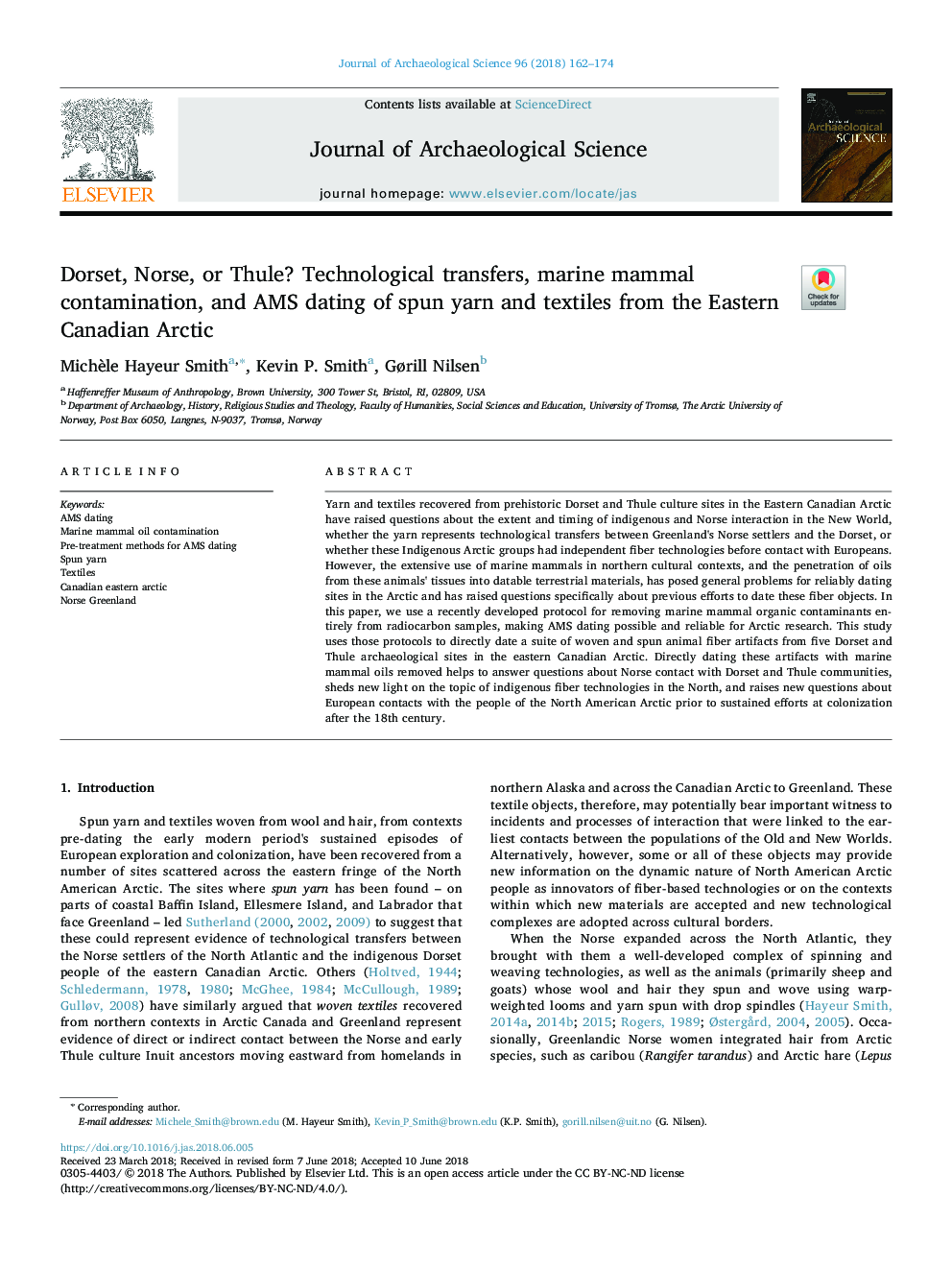| Article ID | Journal | Published Year | Pages | File Type |
|---|---|---|---|---|
| 7440776 | Journal of Archaeological Science | 2018 | 13 Pages |
Abstract
Yarn and textiles recovered from prehistoric Dorset and Thule culture sites in the Eastern Canadian Arctic have raised questions about the extent and timing of indigenous and Norse interaction in the New World, whether the yarn represents technological transfers between Greenland's Norse settlers and the Dorset, or whether these Indigenous Arctic groups had independent fiber technologies before contact with Europeans. However, the extensive use of marine mammals in northern cultural contexts, and the penetration of oils from these animals' tissues into datable terrestrial materials, has posed general problems for reliably dating sites in the Arctic and has raised questions specifically about previous efforts to date these fiber objects. In this paper, we use a recently developed protocol for removing marine mammal organic contaminants entirely from radiocarbon samples, making AMS dating possible and reliable for Arctic research. This study uses those protocols to directly date a suite of woven and spun animal fiber artifacts from five Dorset and Thule archaeological sites in the eastern Canadian Arctic. Directly dating these artifacts with marine mammal oils removed helps to answer questions about Norse contact with Dorset and Thule communities, sheds new light on the topic of indigenous fiber technologies in the North, and raises new questions about European contacts with the people of the North American Arctic prior to sustained efforts at colonization after the 18th century.
Keywords
Related Topics
Physical Sciences and Engineering
Materials Science
Materials Science (General)
Authors
Michèle Hayeur Smith, Kevin P. Smith, Gørill Nilsen,
